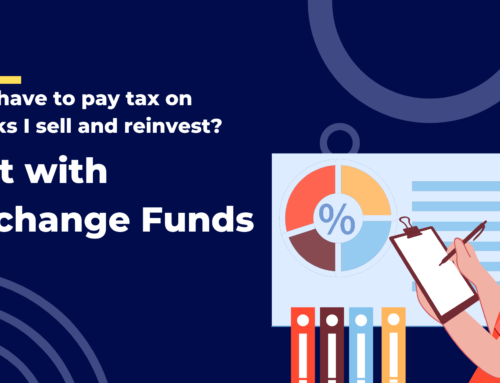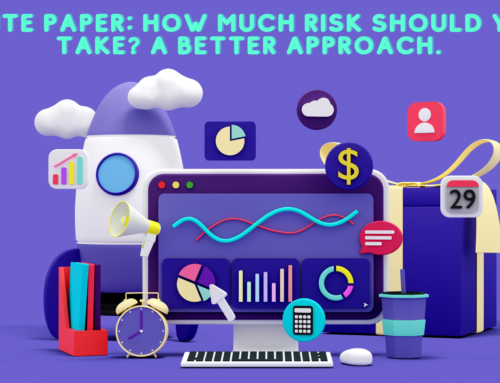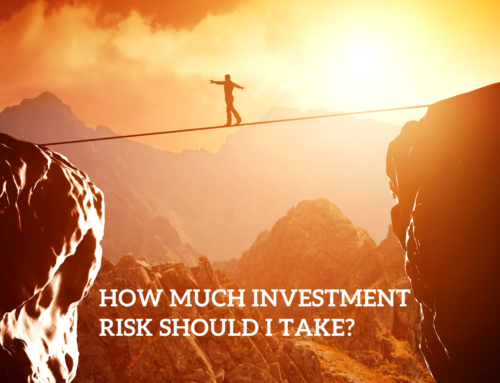I want to take a break from my Postmodern Finance series to talk about a different series of posts I came across recently on the topic of index funds and market efficiency. The anonymous author of Philosophical Economics (who I’ll refer to as Phil) recently wrote several posts which explore, through a series of thought experiments, a fascinating idea: the rise of index funds have made markets more efficient, and are likely to continue to do so, even if index funds come to command the vast majority the world’s investment assets. The posts are very long (over 23,000 words in total), but contain important ideas I haven’t seen made anywhere else, so I’m going to summarize them here, along with my own thoughts.
Some background: As I have written about recently myself, Index Funds (mutual funds that simply mimic the market they invest in by buying all the securities in it in proportion to their size) have gone from virtually nonexistent as late as the early 90s to commanding many trillions of dollars in assets today. In the US stock market, index funds now manage as much as 40% of assets, much of that in the hands of the behemoth fund family Vanguard. This meteoric rise of index funds in general, and Vanguard in particular, represents a dramatic shift in the investment management business. It also represents an economic conundrum. The purpose of investment management is to allocate capital to firms that are adding value to the economy (or have the potential to) and away from firms that are consuming more value than they create. Index funds, on the other hand, do not serve this function. They invest “blindly,” merely buying everything in the asset class they’re assigned to according to its value in the market. Some have argued (myself included) therefore, that index funds are free riders on the costly research provided by active managers, who attempt to identify undervalued securities, and that the trend of increasing control by index funds is unsustainable; if too many people invest in index funds, then security prices will begin deviating too far from their intrinsic value. Capital will be poorly allocated, holding down economic growth. Eventually active managers will find that prices are so distorted that they can start trading and easily beat the market, reversing the trend in increasing index fund dominance.
Informally, I’ve found that most professional investors seem to believe this line of thinking. What Phil shows is that this argument is flawed, that increasing allocation to index funds improves market efficiency and economic performance on average, that the equilibrium level of active management necessary to provide the valuation/capital allocation function is quite small indeed, and that the way this hypothetical small group of professional investors earn their profits is different than what most people have in mind.
The Indexed Economy
Phil has us imagine an economy where the current trend in favor of index funds reaches an extreme conclusion: all investors in the economy invest passively in a single index fund that is ran as a public service at cost. Furthermore, investors in the fund are only allowed to buy or sell shares for purposes of saving or spending. Admittedly, this fund will have to act a bit different than today’s index funds: because it has a monopoly on investment management, it can determine the prices (and by extension, market capitalization) of the securities it holds by fiat. How does it do that? The same way active managers today do, by using teams of professional analysts to estimate the expected discounted cash flows of every firm in the market. Because this monopoly fund owns the entire market, the only source of its returns is the fundamental performance of the firms it holds (i.e. the growth of the overall economy), which is directly related to how efficiently it allocates its capital. The fund, therefore, has an incentive to make its forecasts as accurate as possible, so it will spend a lot of money hiring well-trained professionals to do the necessary analytical work.
How much money would that be? Phil shows that, even hiring thousands of well-paid analysts to price the fund’s investments, the cost of this valuation function should be about 3 basis point per year – that is, roughly 0.03% of the funds’ assets annually. This figure is a tiny fraction of the total active management fees charged by the financial industry today. I think Phil’s estimate is a little on the low side, but even doubling or quadrupling it, it’s clear that the aggregate level of fees currently paid to active managers is far more than what is necessary to provide for the allocation function that professional investors tout.
But. There is a problem here. As Phil adds details to his model to make it more realistic, it becomes clear that this fund has a serious flaw, one that opens the door to active management: it cannot provide liquidity. If an investor wants to deposit money to invest in the fund, say, because she has just begun her career and wishes to save for retirement, she will only be able to do so if there is another investor willing to redeem the same amount from the fund, say, because he has just retired and now needs to live off his savings. If, at any given time, there are not exactly offsetting deposit/redeem orders (a virtual certainty), then the fund will be unable to service the surplus portion, whichever side it’s on. If there are more buyers than sellers, the fund cannot use the excess cash to buy more shares, it already owns all the shares in the economy! If there are more sellers than buyers, the fund cannot sell its shares, there’s no one else to sell them to!
The only way to avoid the massive queues of investors unable to get into or out of the fund, is to allow a market in the fund’s shares, and/or the shares in the firms it owns. That is, to allow active investors to provide liquidity by buying or selling shares in order to balance out order flows, what is normally referred to as market-making. Market makers earn money by standing by, willing to buy shares at a certain price and sell them at a somewhat-higher price, collecting what is referred to as the bid-ask spread. Phil concludes that it is this role of providing liquidity that is the essential role of active management, and the bid-ask spread is the natural means by which it earns its fees.
Active managers cannot, however, earn their fees in aggregate by picking securities which outperform the market, no matter how small the share of active management is. To see this, return to our hypothetical economy; active management has just been legalized, and when the index fund receives more redemptions than deposits, it sells shares of its underlying firms to other investors. Because it is an index fund, however, it will always sell a bit of each and every one of its holdings, in proportion to their valuations. Alice buys more of stock A, and Bill buys more of stock B, but in aggregate, active managers own the same investments as the index fund in the same proportion. No matter how large or small the active portion of the market is then, it will always own the same market portfolio as the passive portion of the market in aggregate, and so their gross returns will always be equal to one another, a fact which Phil calls the Law of Conservation of Alpha.
The way active managers earn their fees is by providing liquidity to the passive segment of the market. When the index fund receives a redemption order, it must sell the securities is owns, in proportion to their market weights, for whatever is the best price they can get. Who will set those prices? The active managers, by placing bid and ask orders. When Alice makes a bid for stock A, it is because she believes it is undervalued at that price. Whether she is a market maker willing to buy or sell stock A at a small spread, or a value investor looking to hold it for several years while it appreciates substantially, as an active manager she provides the same function: providing liquidity to the market, and in so doing also provide the valuation/capital allocation function that until now the monopoly index fund had to do itself and pay for separately.
If the primary function of active investors is to provide liquidity, what happens when we don’t have very many? If there aren’t enough active managers, then average bid-ask spreads on securities will start widening, forcing index funds to buy at much higher prices than they can sell, which will cause them to bleed value every time investors deposit or redeem money with them. This will show up as tracking error – index funds will appreciably lag behind the indexes they are tracking. Today, in highly liquid markets such as US stocks, index fund tracking error is negligible.
Phil thinks that today’s liquid markets require an active portion of about 5% in order to remain sufficiently liquid, and this sounds about right to me too. Clearly, that’s much less than is the case today, even after the massive increase in index fund use in recent years. Very little of today’s active management is involved in anything like market making, but is instead mostly a mix of noise trading and corrective arbitrage. This is where Phil’s claim that the increase in index investing is increasing market efficiency comes in. Many people (probably most) who invest in the market do not know what they are doing. Their actions, on average, only serve to distort market prices, pushing them away from intrinsic value. “Smart money” investors, who have a better understanding of concepts like valuation and risk pricing, and who more consistently beat the market, serve mostly to correct the mistakes of the former group. As I’ve written about, the most robust sources of outperformance, such as value and momentum, arise as a result of predictable investor biases. If biased investors do not enter the market in the first place, these patterns would become much less reliable. Indeed this is what index funds do. Index funds have gained mostly at the expense of underperforming active managers. As more and more investors realize they are unable to beat the market, they give up and start buying index funds. Because (ignoring liquidity), active managers must underperform the market after fees, this trend will in all likelihood continue, as the losing side continues to drop out and use index funds. This has the effect of raising the average skill level of the remaining active managers, as it is the less-skilled ones that preferentially drop out. In the extreme, this trend continues until only a tiny group of the absolute best active managers is left, who on average do just as well as index funds after fees, which they earn through their market-making activities.
My Thoughts
Index funds will most likely continue to gain ground against active managers for the foreseeable future, until they come to command a majority of the world’s assets, though it’s unlikely we’ll get to the optimal point of 95% or so. There will probably always be more active managers who think they can beat the market than is actually possible (hope springs eternal, after all). What does one make of all this? A few takeaways:
- Does this mean it’s irrational to invest with an active manager? No. Just because active investors in a liquid market cannot beat the market in aggregate does not mean that any particular investor is unable to beat the market, even indefinitely. But an investor needs to realize that the only way they can outperform is by others underperforming. An active investor should be able to identify what dumb money mistakes they are correcting, who is making those mistakes, and why we should expect them to keep making those mistakes in the future. In my opinion, very few investment managers try to do this.
- As index investing becomes more common, active investing will become more difficult, not less like most active managers seem to think. Strategies that have worked in the past, whether rules-based strategies like the value or momentum factors, or discretionary stock-picking based on deep-dive analysis, are likely to see their outperformance attenuate in the future, or maybe even disappear. I can, however, think of a couple exceptions to this rule…
- One exception is to follow a strategy of investing in less liquid assets. Research has shown that stocks that trade relatively infrequently have historically outperformed their more liquid counterparts. Index funds, being liquidity demanders, are bound to pay premiums to the liquidity providing holders of such assets. Harvesting liquidity premiums, on the other hand, isn’t as easy as it sounds. Mutual funds, hedge funds, and other active managers that face unpredictable flows in and out of their business are just as likely to be forced to transact in illiquid securities on unfavorable terms as index funds. Investors that load up on illiquid assets should be sure they don’t face such cash-flow uncertainties.
- Another likely exception is low-volatility/betting-against-beta investing. Less volatile assets tend to earn higher risk-adjusted returns than higher volatility assets. Investors can turn these into higher absolute returns if they are willing to use leverage. This phenomenon is the result of the unwillingness/inability of most investors to use leverage. This is not a mistake per se and it is not something that index funds do anything to fix. If we ever reach the extreme endpoint where active investors are only 5% or so of the market, they would most likely be highly-levered hedge funds that would work to equalize risk-adjusted returns, but we are a long way from that point, and right now if anything the average investor has only become less willing to use leverage.
- Finally, and most importantly perhaps, all of this only applies within markets from which index funds select securities, not across markets. That is, the rise of US stock index funds makes the pricing of stocks within the US more efficient, but does not make the pricing of the US stock market relative to the US bond market more efficient. There are now index funds for virtually every asset class available, but as I wrote about in my post on the index fund revolution, there is still no fund that indexes all asset classes together, nor do I foresee any demand for such a product (most investors hold little to no foreign bonds, for example, even though foreign bonds are the single largest asset class in the world). Instead, target date funds and other balanced solutions are becoming more common, which invest in a predetermined mix of foreign and domestic stocks and bonds in order to achieve a certain risk level. Importantly, such funds are index funds within the markets they invest in, but active funds in their asset allocation. If anything, I see the rise of index funds as making the pricing between asset classes less efficient, as investors increasingly put money in balanced funds that buy asset classes out of proportion to their market capitalization and without regard to their valuations, and a wide array of index ETFs allow uninformed investors to speculate on asset classes they never had access to before. Asset allocation, already more important than security selection in determining returns, will likely become an even more dominant force, and the best possible source of the active investor’s edge.
- Disclosures: This post is solely for informational purposes. Past performance is no guarantee of future returns. Investing involves risk and possible loss of principal capital. No advice may be rendered by RHS Financial, LLC unless a client service agreement is in place. Please contact us at your earliest convenience with any questions regarding the content of this post. For actual results that are compared to an index, all material facts relevant to the comparison are disclosed herein and reflect the deduction of advisory fees, brokerage and other commissions and any other expenses paid by RHS Financial, LLC’s clients. An index is a hypothetical portfolio of securities representing a particular market or a segment of it used as indicator of the change in the securities market. Indexes are unmanaged, do not incur fees and expenses and cannot be invested in directly.






